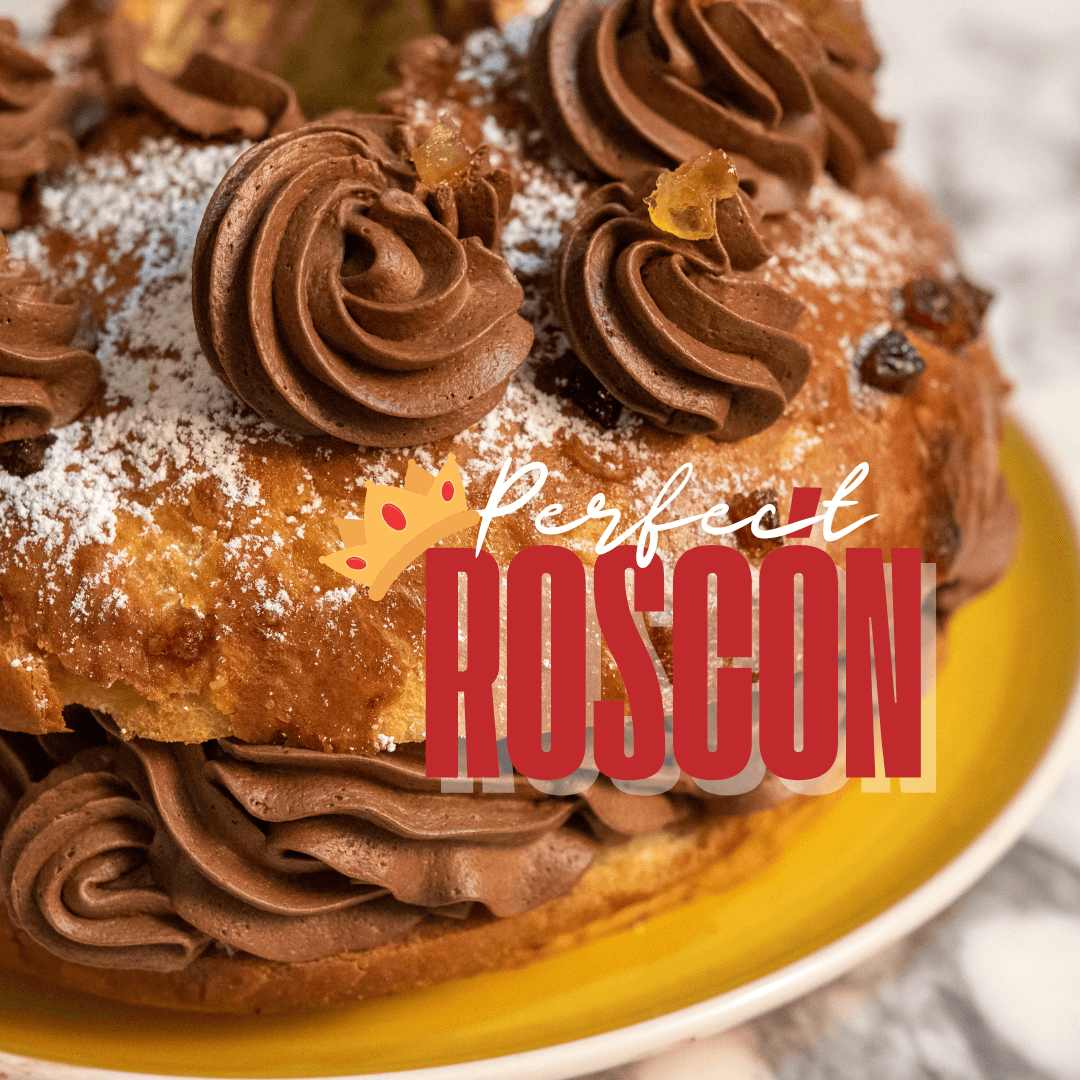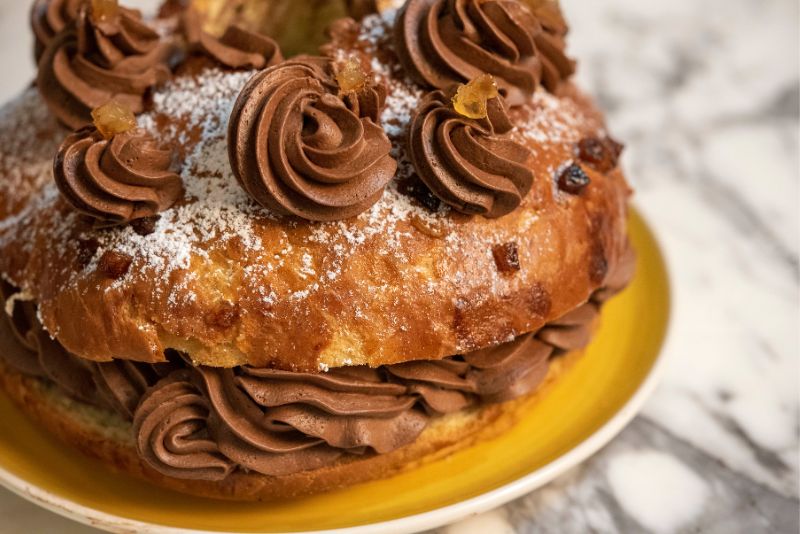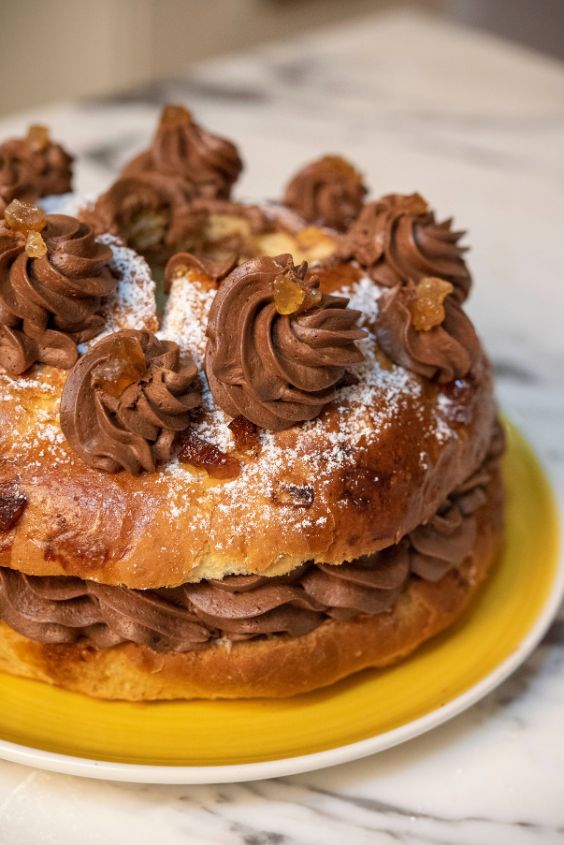
The Origins of Roscón de Reyes: A Spanish Crown of Sweetness
A Tradition in Every Bite: El Roscón de Reyes
As January 6th approaches, households across Spain prepare one of the most awaited holiday treats: the Roscón de Reyes. This ring-shaped cake, adorned with candied fruits and often filled with cream, symbolizes celebration, history, and family togetherness.
If you’ve been in Spain during the Christmas season, you’ve likely spotted the roscón in bakery windows. You can indulge early or wait for the traditional day to savor this festive treat.
A Sweet Tradition with Ancient Roots
The Roscón de Reyes connects deeply to Three Kings’ Day (Día de Reyes), but its roots trace back to ancient Rome. During Saturnalia, Romans celebrated with a round cake made of honey, figs, and dates. Inside, they hid a broad bean, and whoever found it enjoyed good fortune for the year ahead.
Over time, as Christianity spread, the tradition evolved to honor the Three Wise Men (Los Reyes Magos) and their visit to baby Jesus. The circular shape of the roscón reflects a king’s crown, while the candied fruits resemble jewels.
France created a similar tradition with the Galette des Rois, a flaky almond-filled pastry enjoyed on Epiphany. Discover more about this French tradition and try making it yourself with the Galette des Rois Recipe from our sister site, Cook’n With Class.
A Cake of Surprises and Festivities
The Roscón de Reyes includes a delightful twist. Bakers hide two surprises in the dough: a small figurine (often a king or symbolic figure) and a dry bean. The figurine crowns the finder as “king” or “queen” for the day. Meanwhile, the person who finds the bean buys next year’s roscón. Families love this playful tradition, which sparks laughter and excitement as the cake gets sliced.
When and How It’s Enjoyed in Spain
The Roscón is traditionally eaten on the morning of January 6th. People often pair it with a steaming cup of thick Spanish hot chocolate. The night before, families gather for the Cabalgata de los Reyes, a grand parade where the Three Kings distribute candy to children. This magical event fills streets across Spain with music, lights, and joy.
A Modern Twist on Tradition
Traditionally, the Roscón comes unfilled. However, modern versions feature fillings like whipped cream, custard, or truffle cream. For an extra treat, try using Crème Pâtissière as a filling. Visit our YouTube channel soon for a tutorial on how to make and fill your homemade roscón.
The Roscón: A Celebration of History and Culture
The Roscón de Reyes represents more than dessert. It celebrates history, culture, and family traditions. Whether you’re enjoying a slice with loved ones or learning its origins, this sweet treat connects us to the past while creating joyful memories in the present.
Make It Yourself!
The Roscón de Reyes is essential for celebrating Three Kings’ Day. Now you can make it at home with our recipe below. Whether filled with whipped cream, custard, or enjoyed as is, this sweet crown adds a touch of Spanish tradition to your table.
You can experience Three Kings’ Day in Seville on the 5th and 6th of January each year. If you’d like to explore Andalusian food traditions, join us for our Let’s Eat Seville Tour. You’ll taste and experience vibrant customs while cooking up local dishes with our chef.
See you in Sevilla!

Roscon de Reyes
Ingredients
For the brioche
- 250 grams All-purpose Flour 8.82 oz
- 3 Eggs
- 50 grams Sugar 1.76 oz
- 1 pinch Salt
- 125 grams Butter 4.41 oz
- 1 Lemon zest only
- 25 grams Fresh Yeast or 10 grams dry yeast 0.88 oz
- 60 grams Candied fruits mix small cubes 2.12 oz
- 1 Egg Yolk for egg wash
For the Ganache
- 200 grams Dark Chocolate at 60 or 70% 7.05 oz
- 500 grams Heavy Cream at 35% 17.64 oz
Instructions
Make the Brioche
- In the stand-up mixer, add all the ingredients except butter and mix on speed one for 10 minutes.
- Add the butter and mix on speed 2 for 10 more minutes.
- Let rest the dough for 1 hour at room temperature after covering the bowl with plastic film.
- After one hour, deflate the dough with your hand and store it in the fridge for at least one hour.
Shape and bake
- Take the dough out of the fridge and make a nice ball. Flatten the dough to make a large disk and make a whole in the middle. Enlarge the whole with your hands until you have a large and regular ring. Put on a baking pan with parchment paper and cover with plastic film. Let rest and rise one hour.
- Turn the oven on at 170ºC or 320ºF
- Brush with egg wash and add the candied fruits cube. Bake 30 to 40 minutes, adjusting the heat to the color, but 30 to 40 minutes should be plenty. Remove and let cool down on a rack.
Make the chocolate ganache
- Melt the chocolate on a double boiler and remove it.
- Boil the heavy cream and pour on the chocolate, mix well and refrigerate until cold.
- Whisk the cream very energetically.
- Fill up the piping bag and keep it at room temperature.
Finishing the cake
- Cut the brioche cake in half, fill it up with chocolate ganache using the pipping bag but keep some for the final decoration.
- Put back the top part of the cake and add more chocolate cream so it look appealing. Add a small gift or a golden coin in the brioche bottom part.
- Keep one hour in the fridge and serve.


